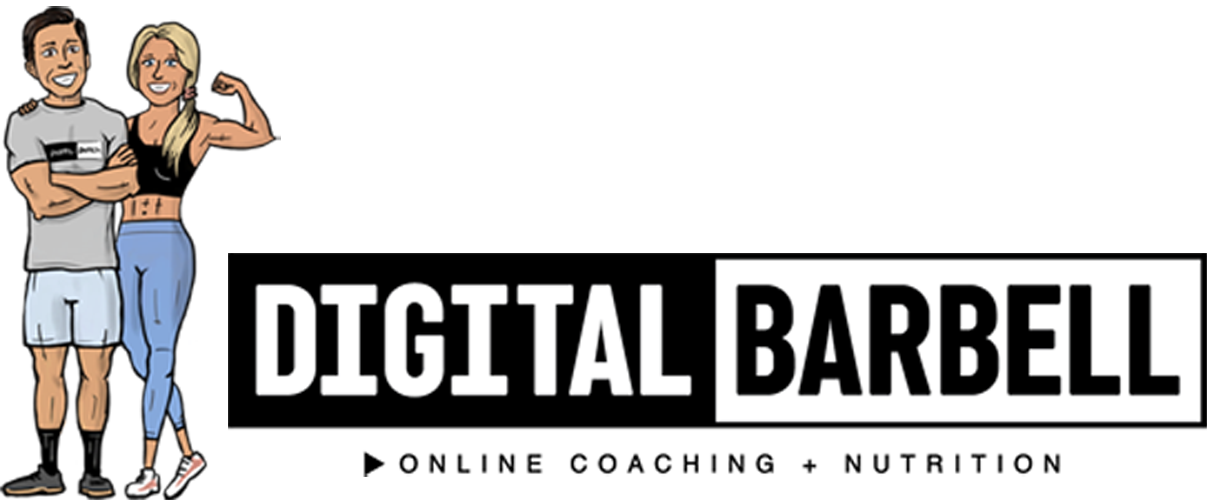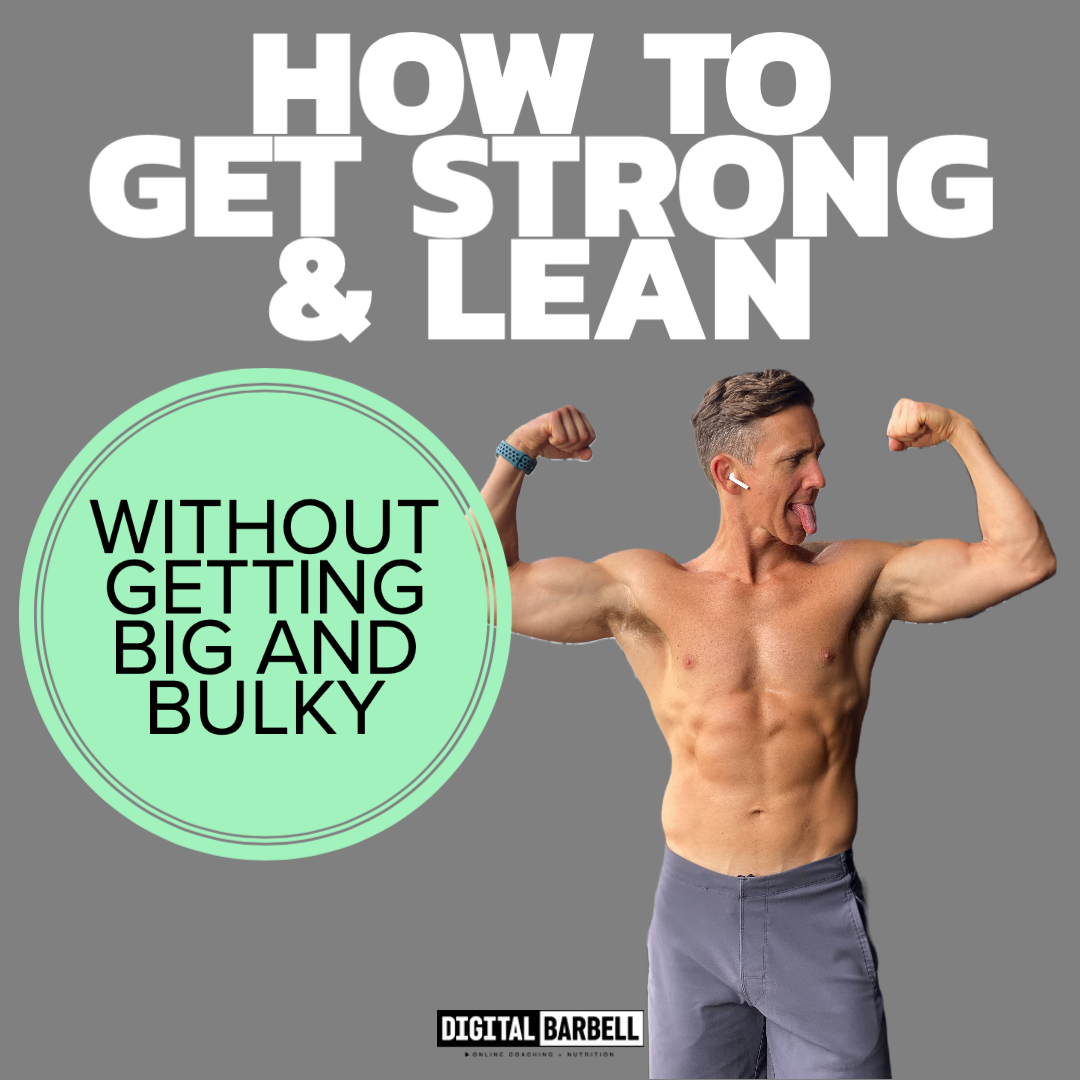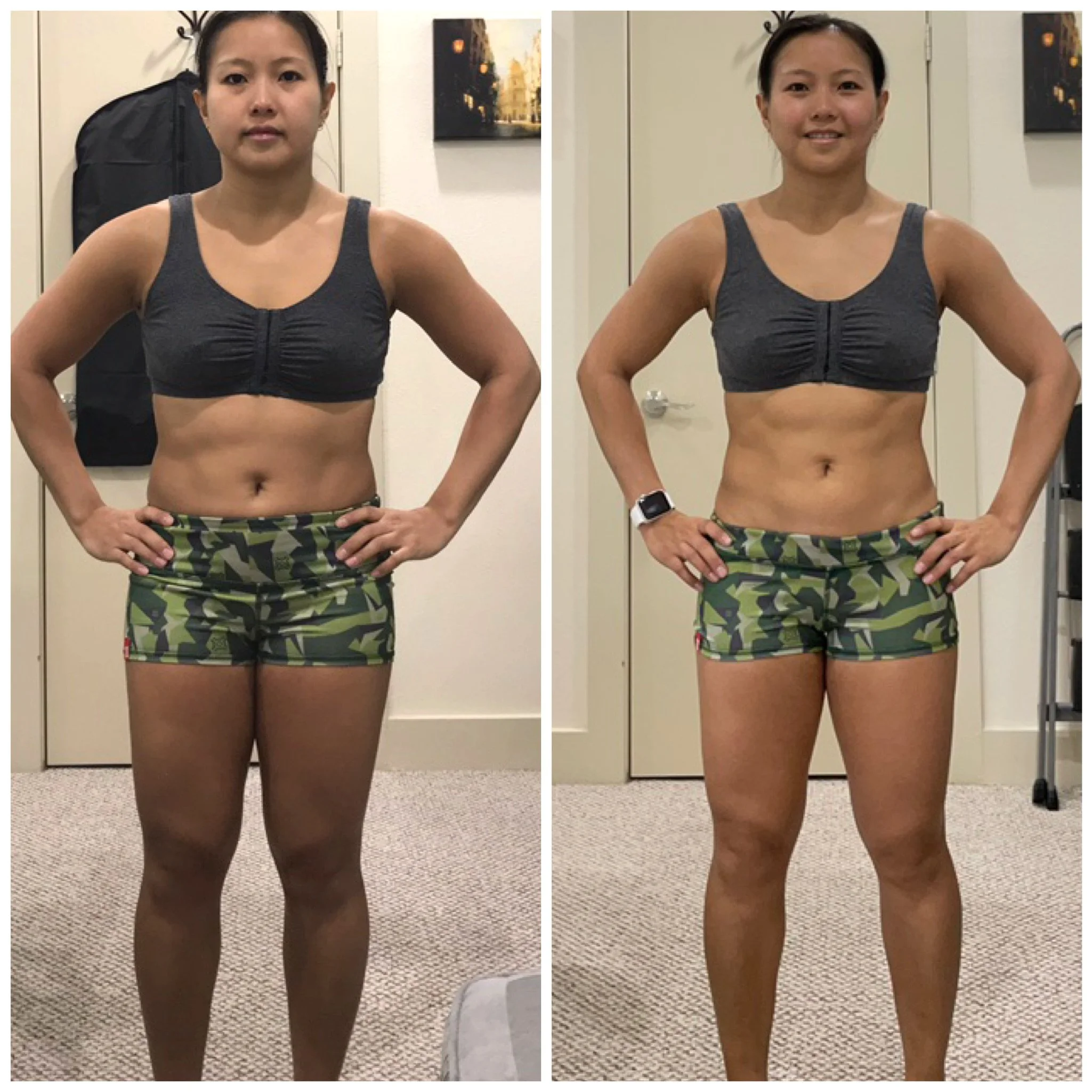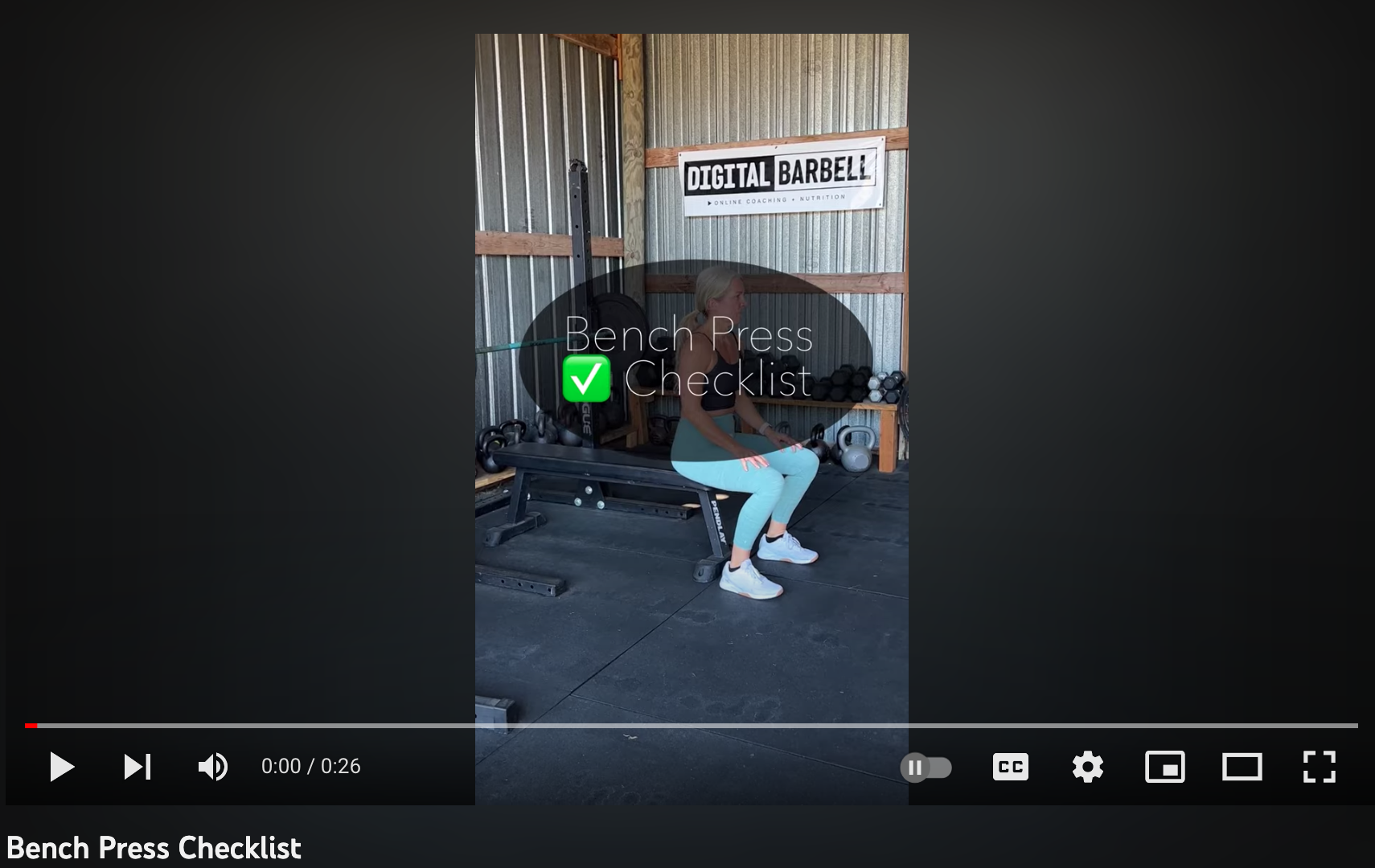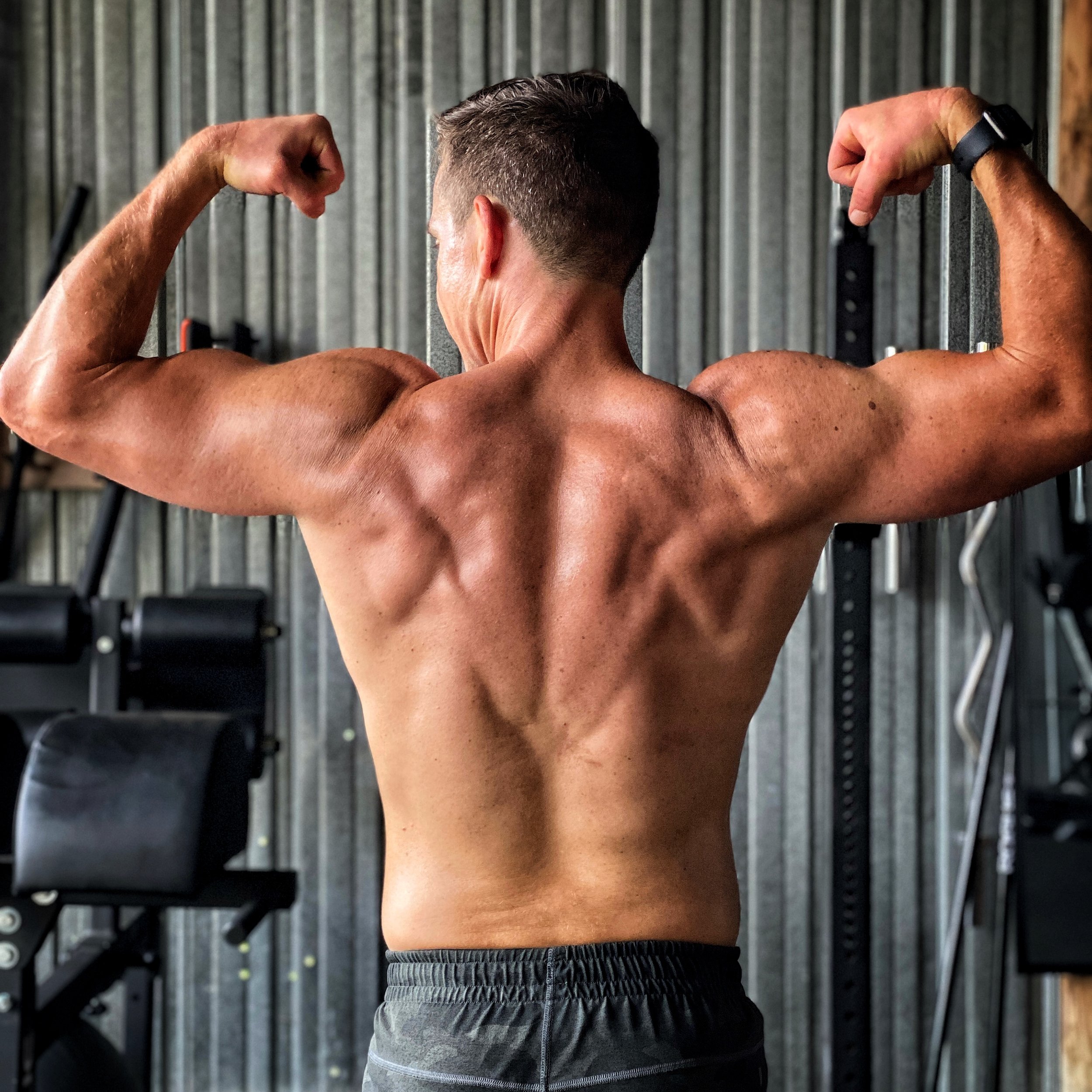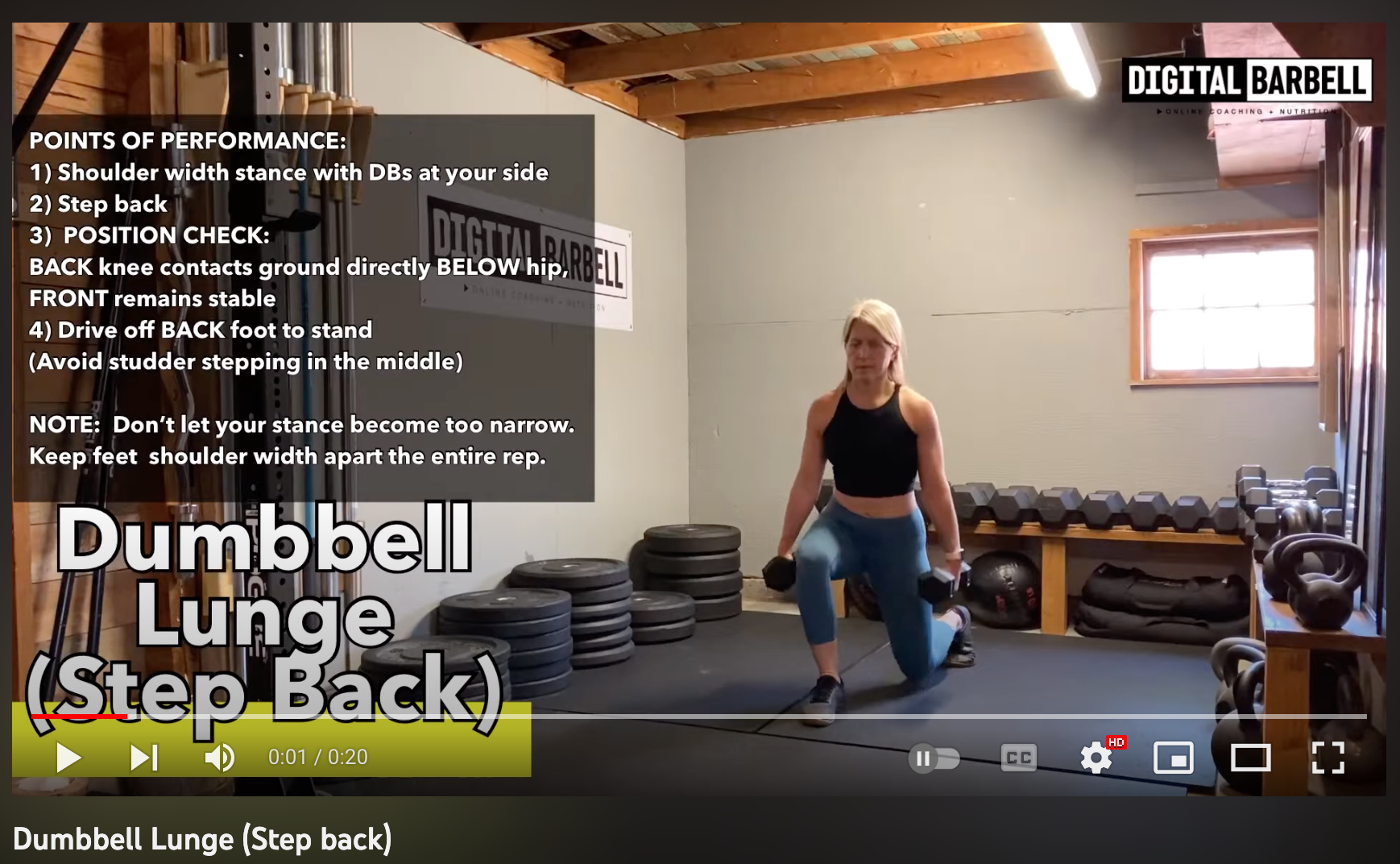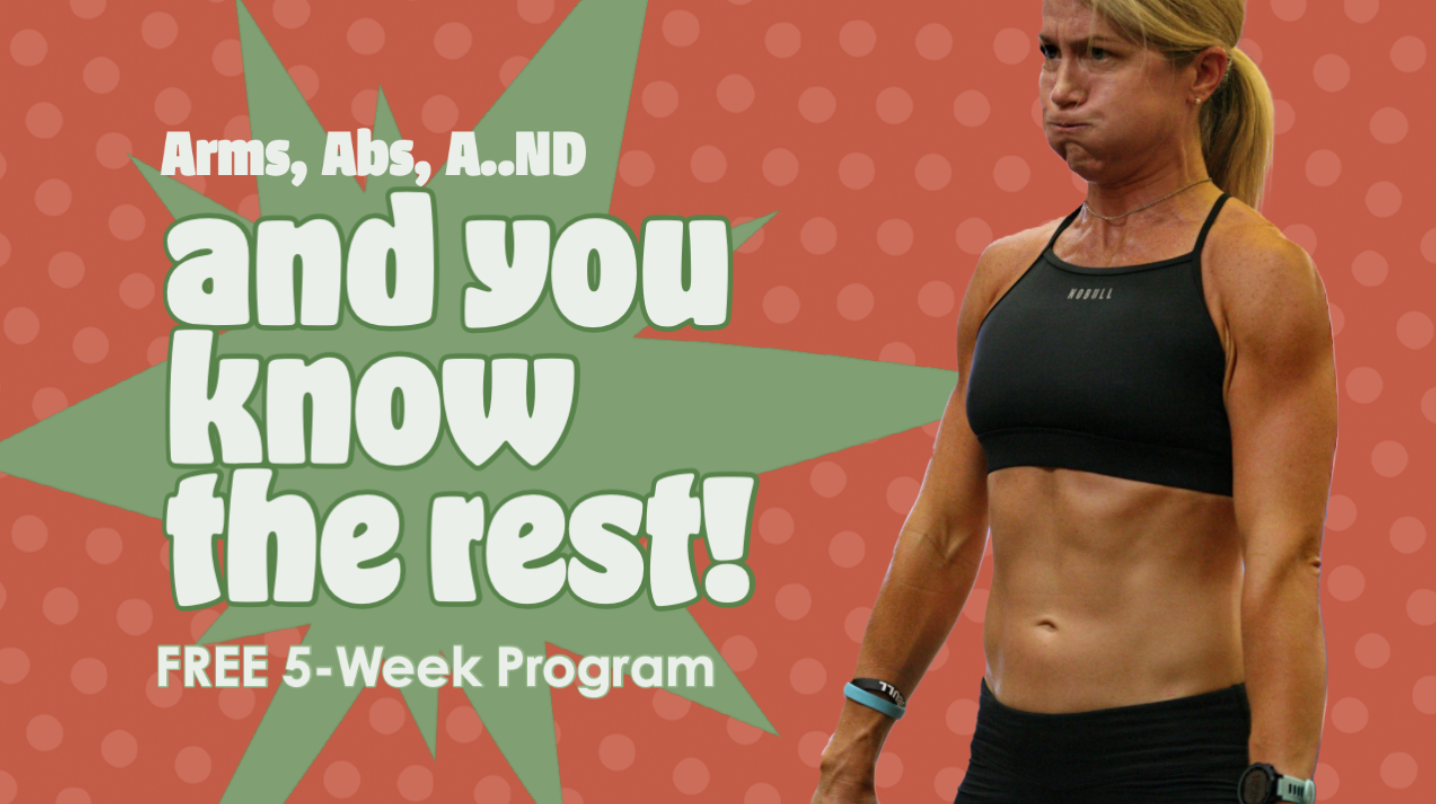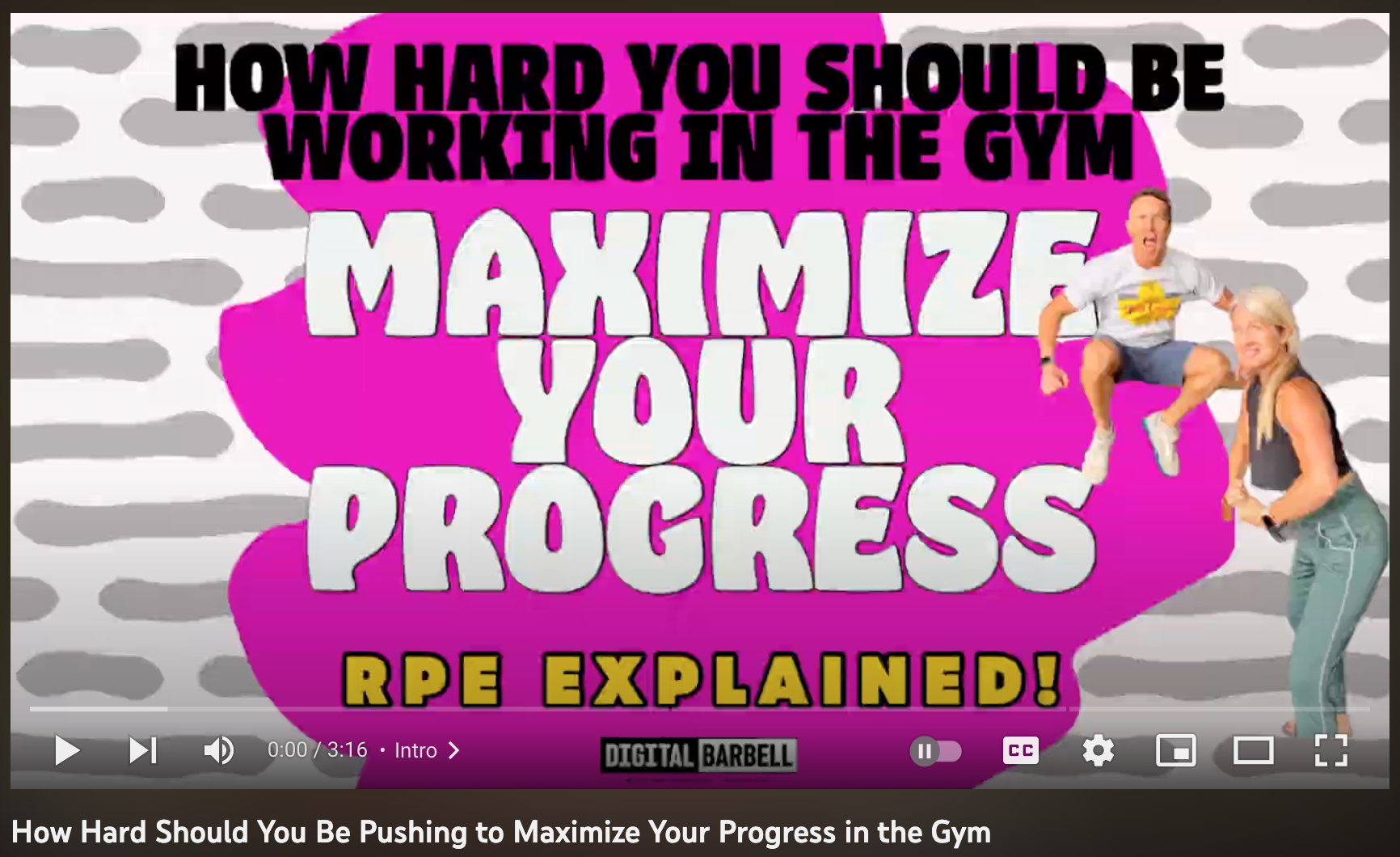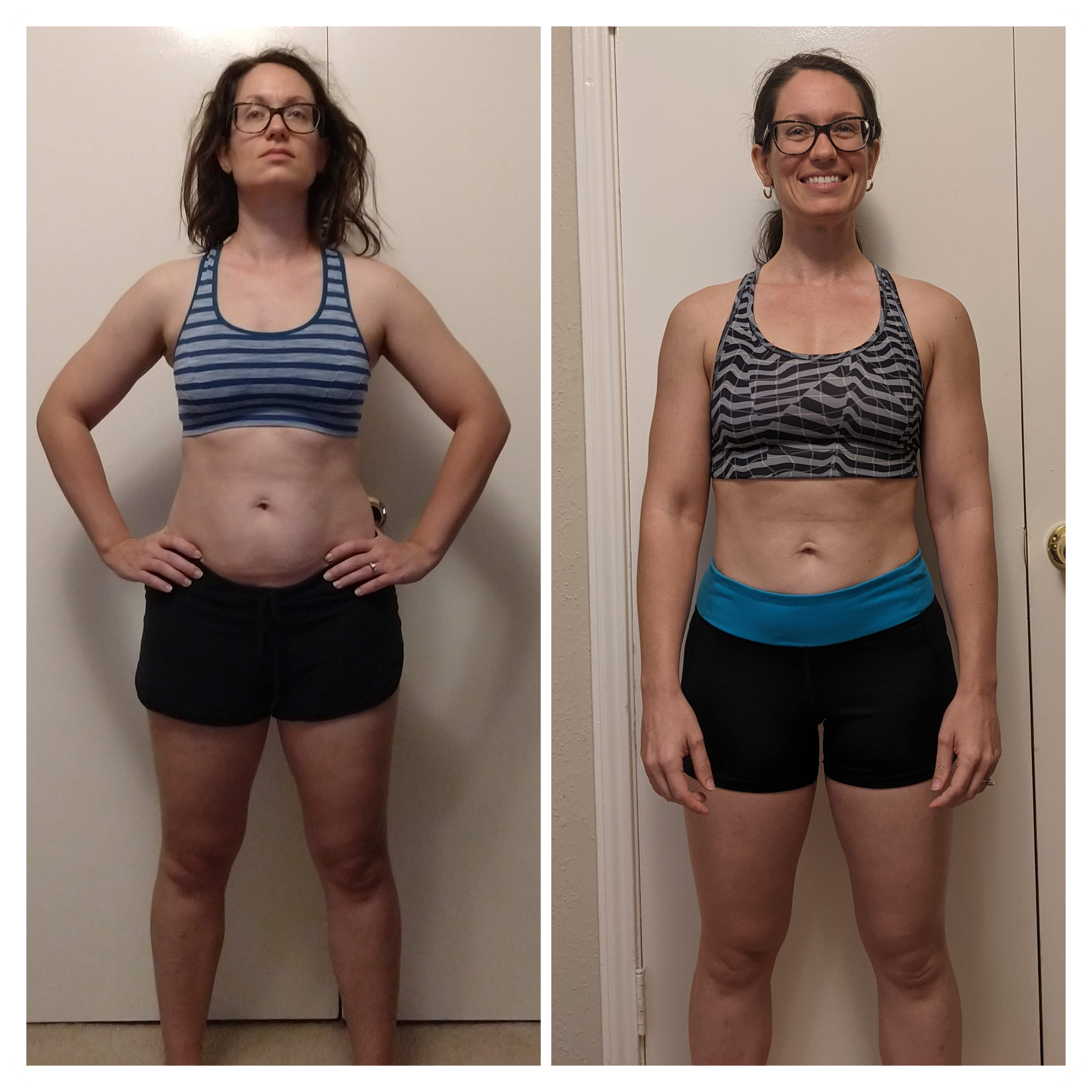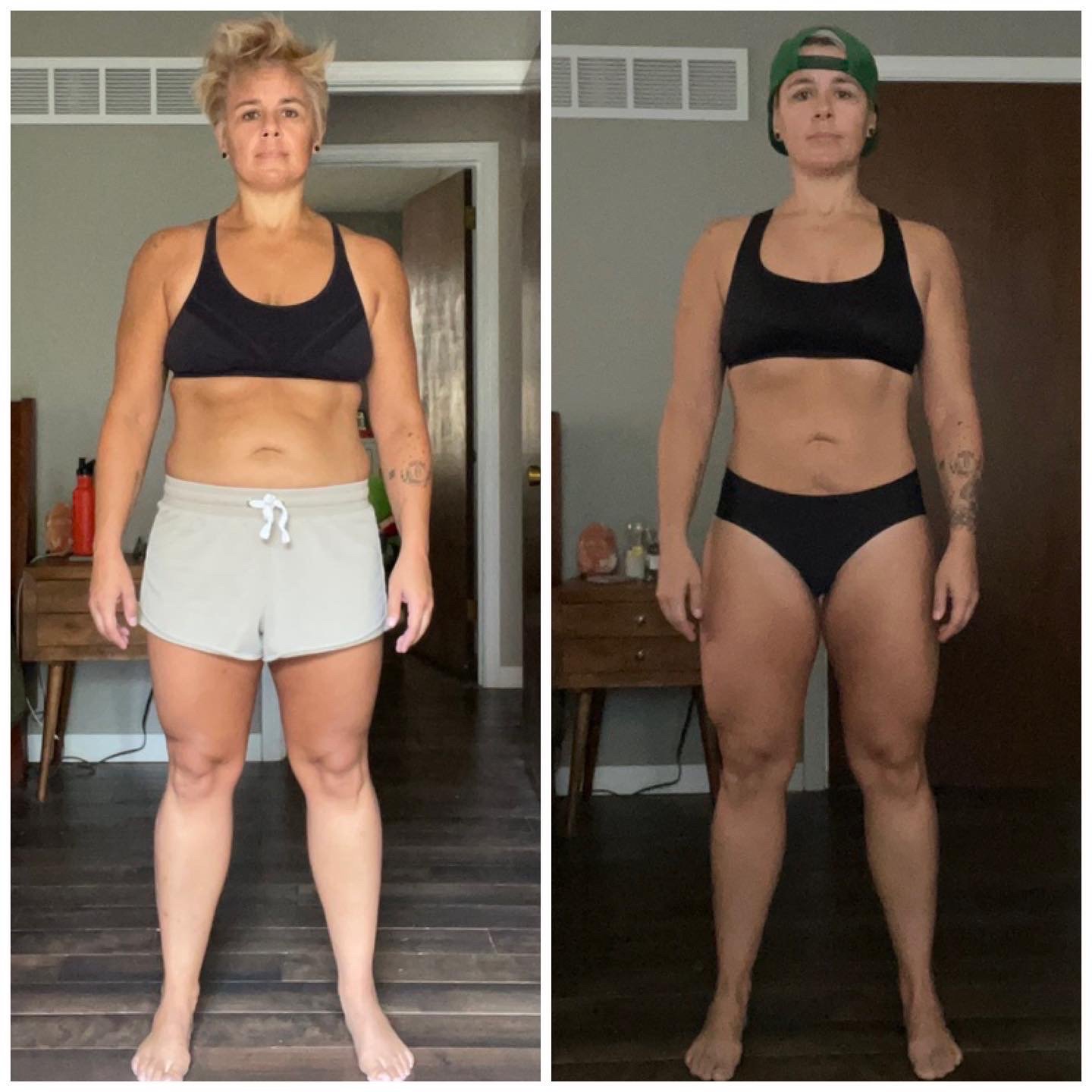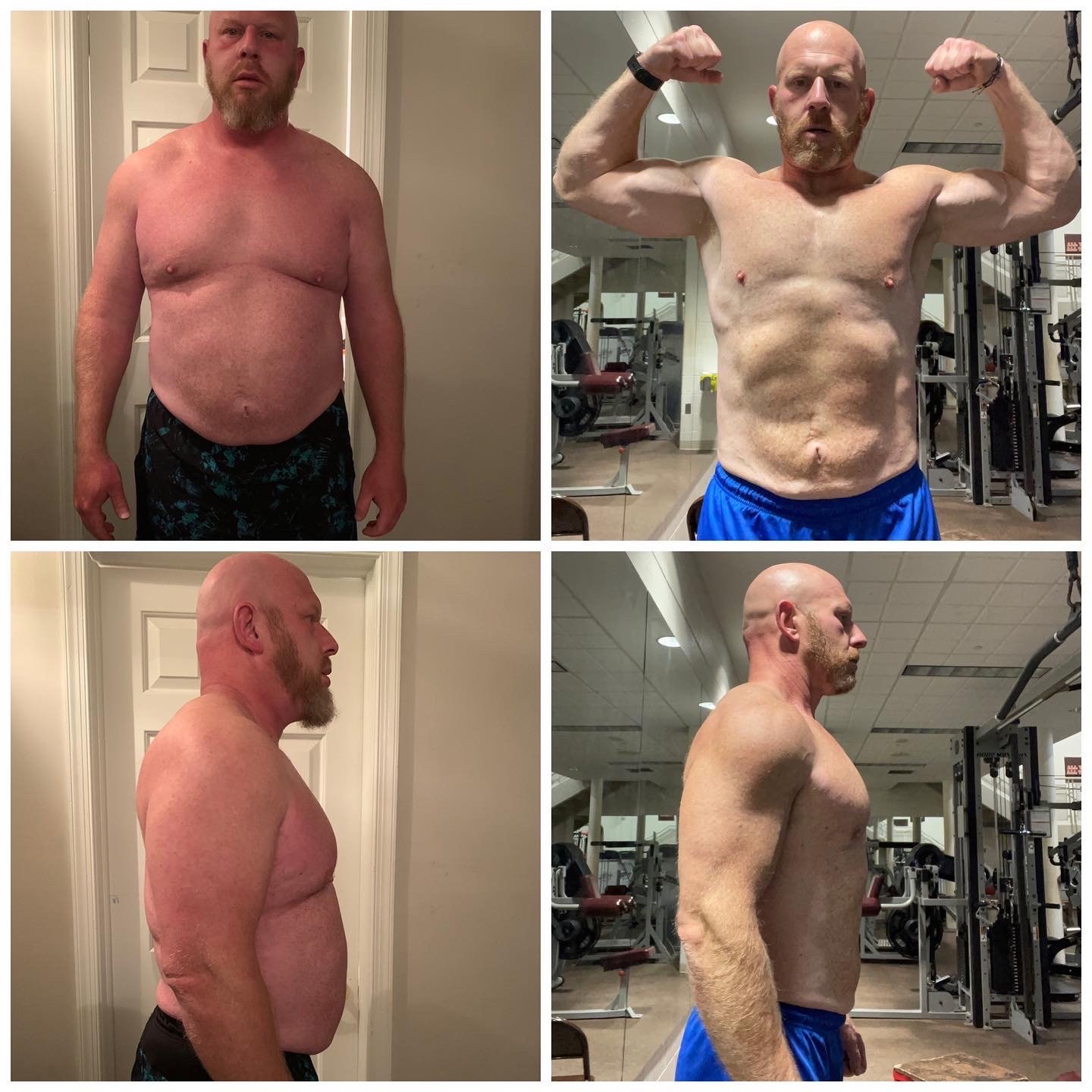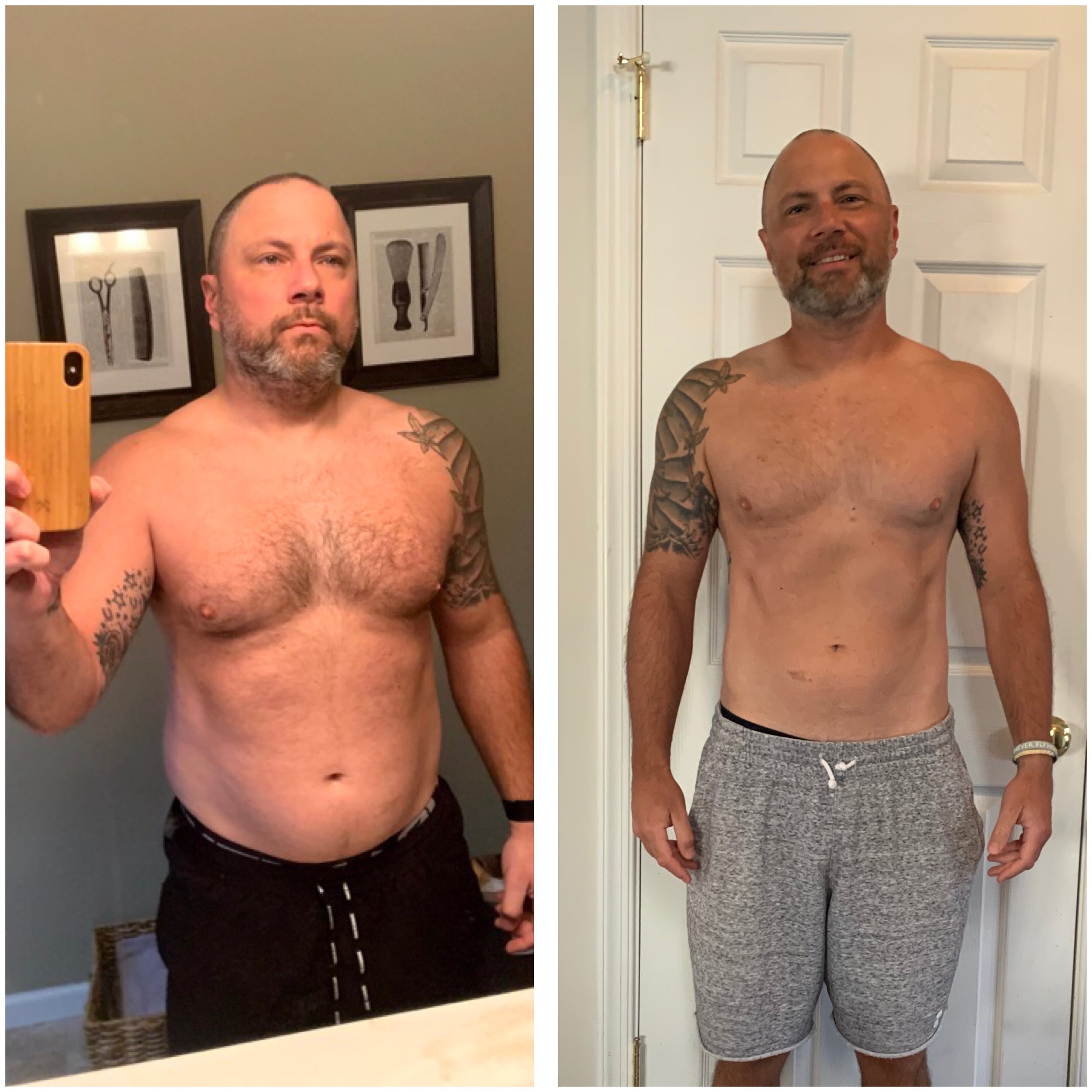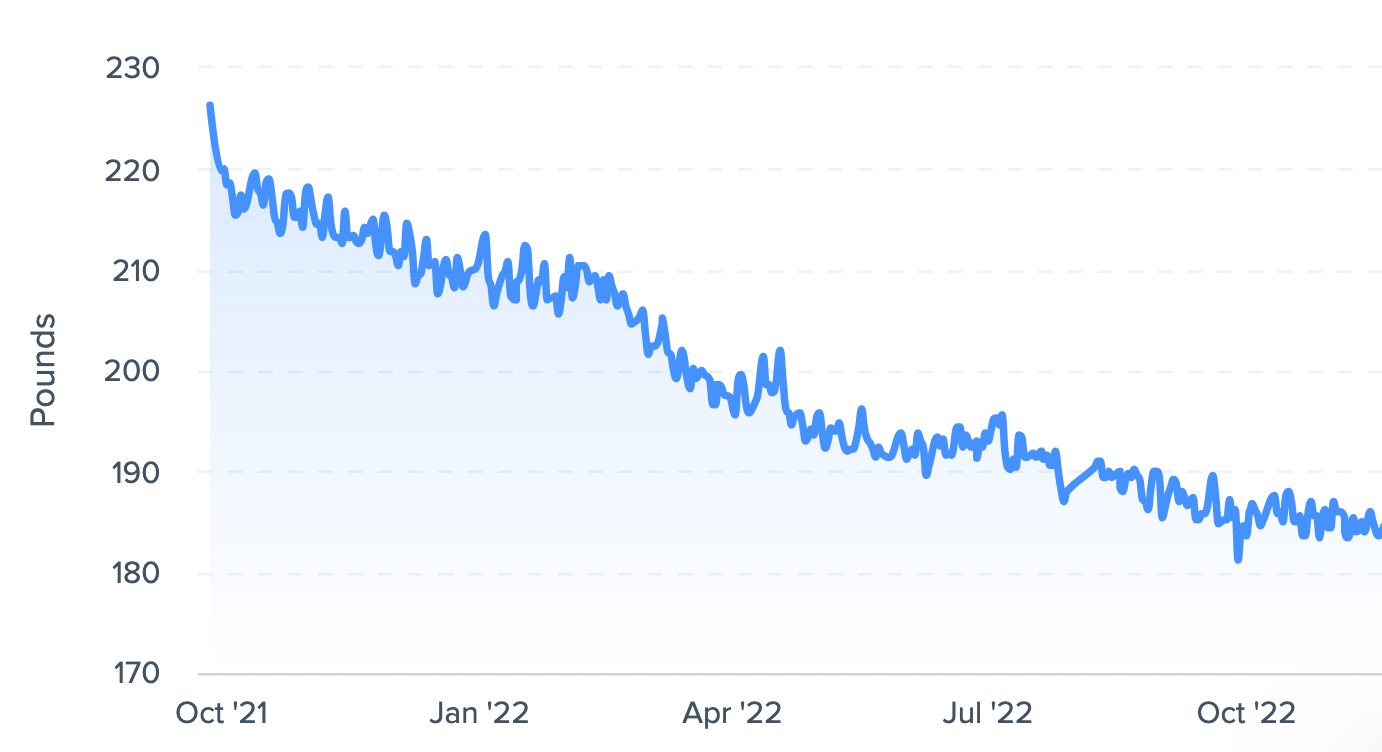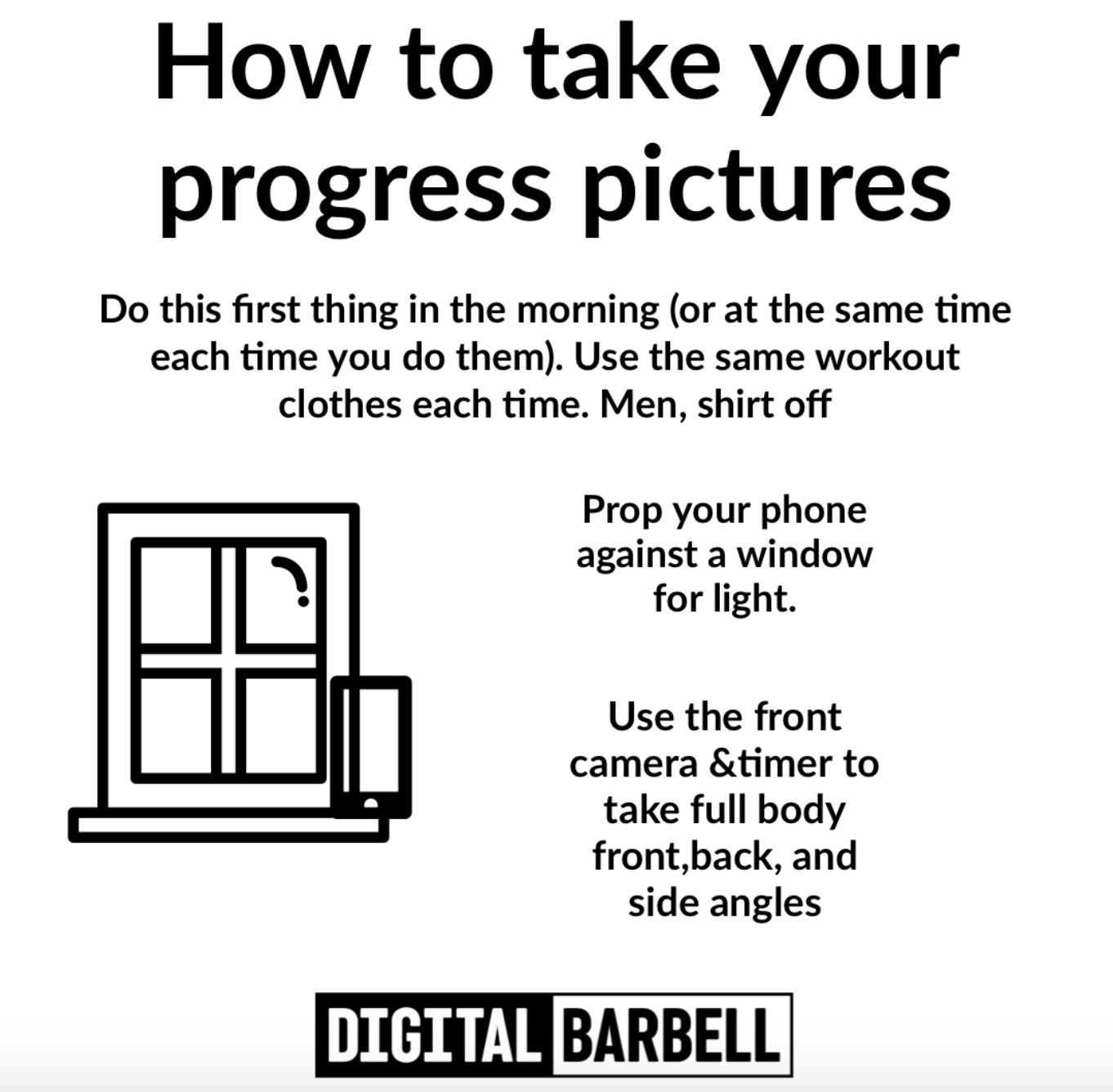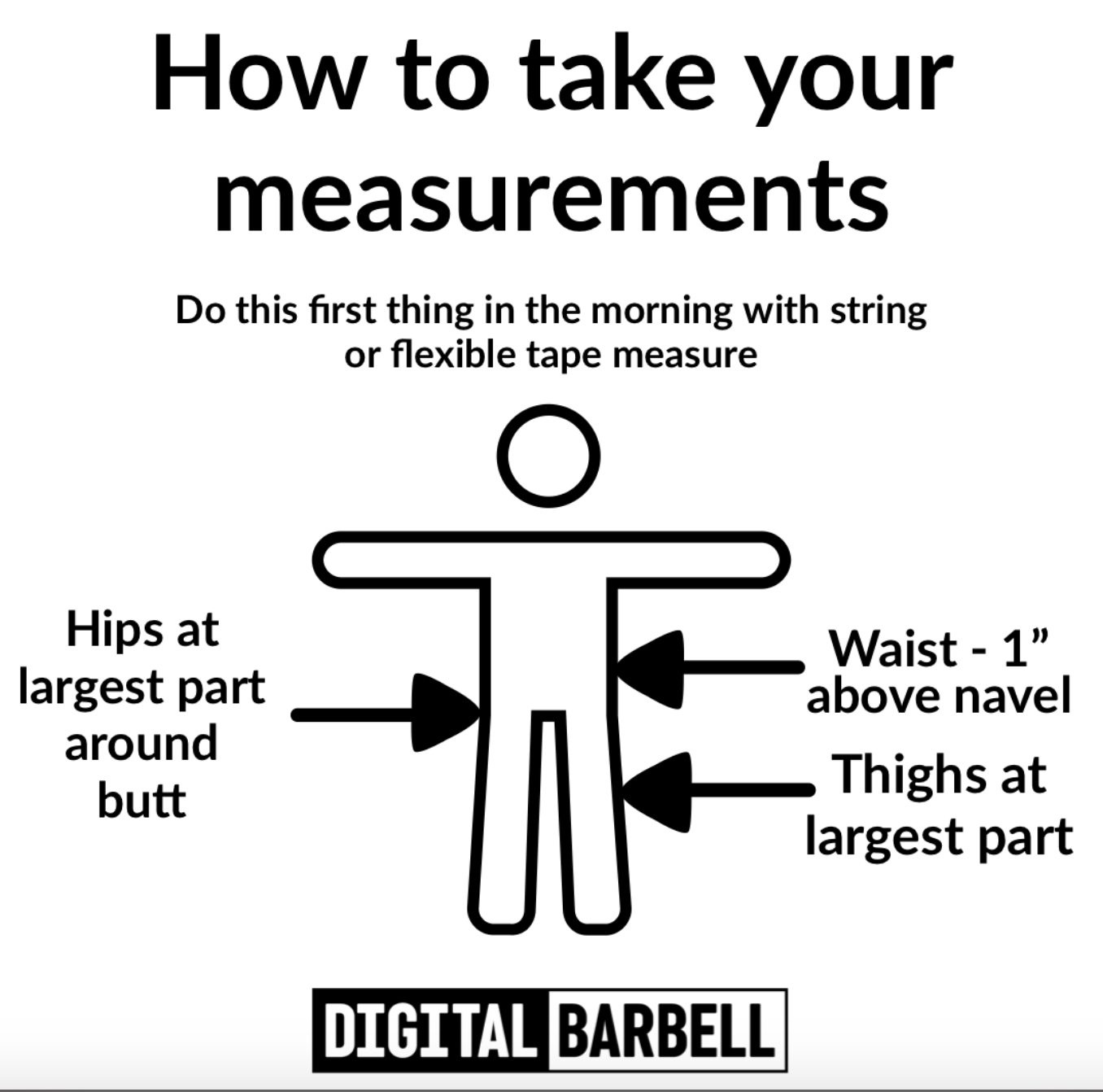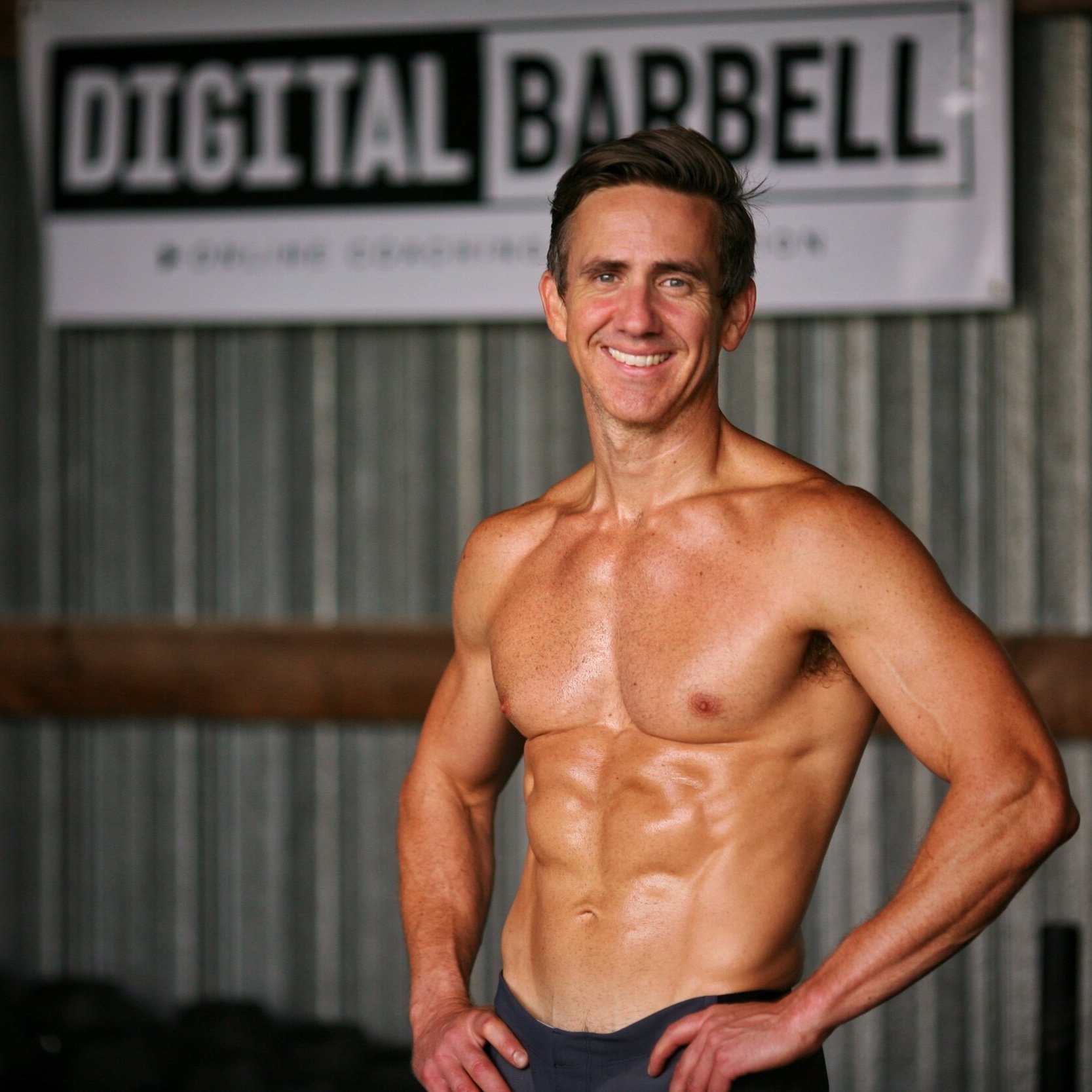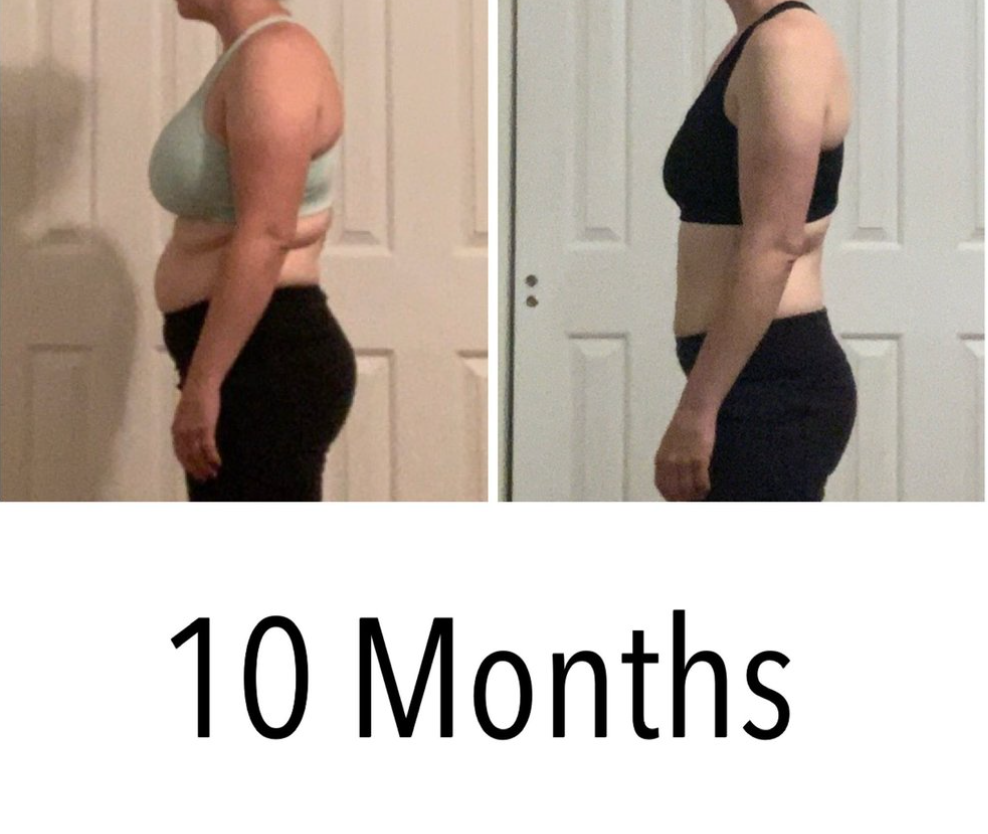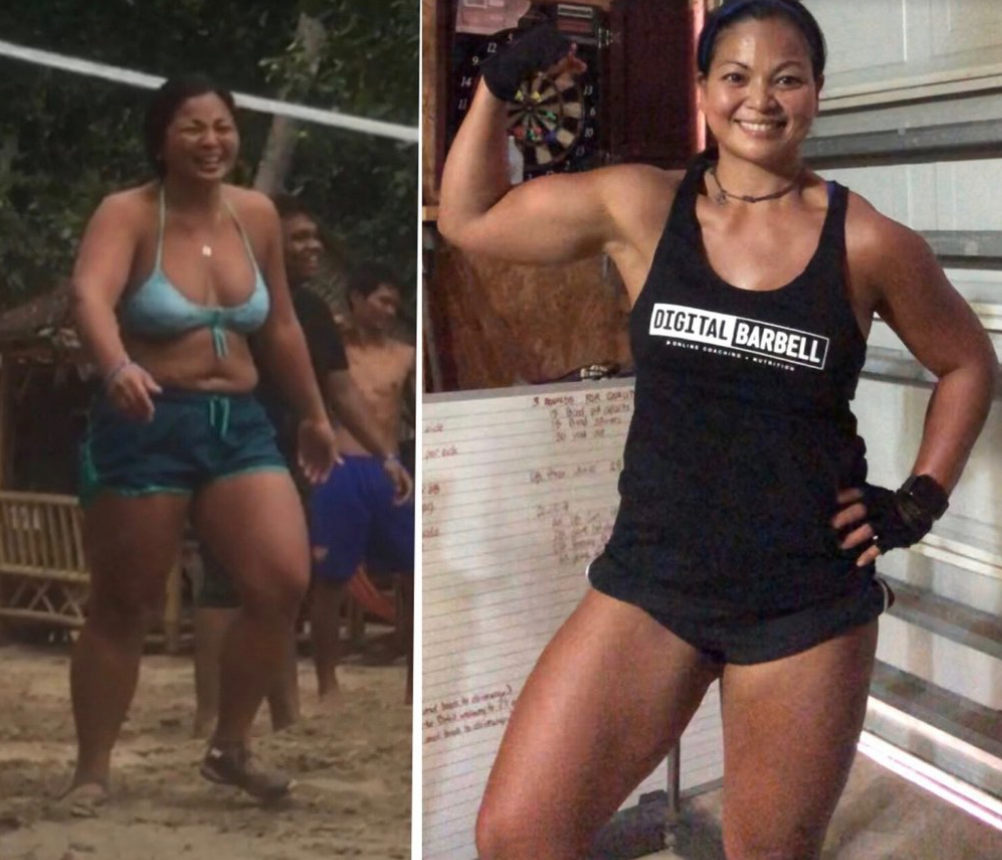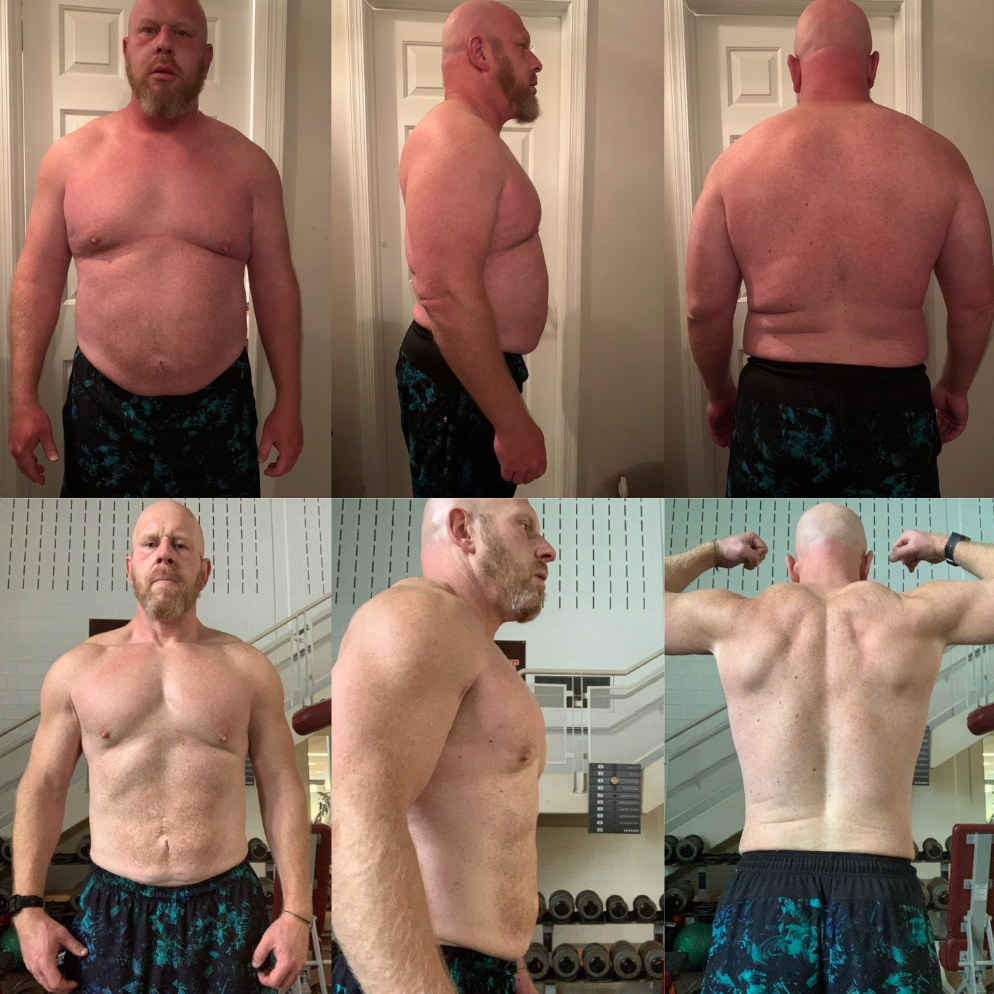How To Get Strong and Lean Without Getting Big and Bulky
HOW TO GET STRONG & LEAN
WITHOUT GETTING BIG & BULKY
Written by Jonathan Fletcher
You want to be strong right? I know I do. I know our clients do too. Being strong is awesome. Strength gives you a healthy dose of Vitamin C. No, not that Vitamin C… I’m talking about confidence.
You walk with a different cadence when you know that you’re strong. You see people notice you, as they wonder how strong you actually are.
You step up and volunteer to pick up that heavy cooler at the beach when you’re strong. You save old ladies from burning buildings when you’re strong.
There’s no physical challenge you back down from when you know that you are strong. As I said, being strong is awesome.
Have you ever heard the term “Farm-Strong”? You know the type. Trucker hat, thick beard, pickup truck, worn-in denim overalls, and boots that could tell a thousand stories. Farm-strong folks built their strength through back-breaking labor, chicken-fried macros, and maybe even beer that comes in a 30-pack.
There’s no doubt these guys and gals are strong. But what they’ve gained in practical strength, they sometimes lack in the physique department. Not always, but the fact is that sometimes farm strength boils down to the equation of: mass moving mass.
Since you’re reading this article on our website, and we get paid to help people get strong, fit, and actually look like they work out…
I’m going to assume that you want to be strong, but you’d also like to be fairly lean. Not necessarily lean enough to step on a bodybuilding stage rocking a fake tan and a bikini, but lean enough to look fit, and feel confident with your shirt off at that Memorial Day pool party.
Hey, We’re Jonathan & Blakley
We’re the owners of Digital Barbell💪🏼
Before we begin… We spent YEARS working out and not getting results. Talk about frustrating!
We put together the 10 Reasons You Might Be Working Out But Don’t Look Like It. We’ll email you every day for 10 days sharing why what you’re doing isn’t working, and what to do instead. Click the button below!
So the question is…
How can you get strong and stay lean at the same time?
Or another way to put it…
Can you build strength without getting too big and bulky?
The good news is that you absolutely can. You can get really strong, build a great physique, and still be lean and athletic looking.
You can get super strong, and have muscles that you can see in the mirror without having to get big like our farm-strong friend, or like those fake-tan, juiced-out bodybuilders you’ve seen online.
In this article you’ll learn everything you need to know about getting strong and staying lean including:
- Why you have to train to get strong and lean
- The best program to follow to get strong and lean
- The best exercises to do to get strong and lean
- How much cardio you do to get strong and lean?
- How much to eat to get strong and lean (calories, protein, carbs & fat)
- How long it takes to get strong and lean
- What supplements can help you get strong and lean
Are you ready? Let's go!
How to train to get strong and lean
Notice that I used the word “train”, and not “exercise”. Training means that you are following a specific workout program that gets more challenging over time while doing specific exercise progressions.
If you aren’t sure what that means…progressions are the sets, reps, and weight used on specific lifts that you do over time.
Exercise (like what you do at a group fitness class or if you just go for a run to get sweaty) is random and lacks the progressions and exercise selection that truly leads to more strength while staying lean.
To get strong while staying lean, you need to be following a strength training program that utilizes Progressive Overload.
When we work with our 1-on-1 training clients, progressive overload is a non-negotiable in their programs, regardless of their goals. It works, every single time.
Progressive overload works to make you stronger by taking advantage of your body's natural ability to adapt to stress. In the case of lifting weights, that means that if you struggle to lift a certain amount of weight today, you’ll be stronger and struggle less with it in the future assuming you get ample rest and recovery.
If your goal is to get stronger, and also be lean you should be training with progressive overload, and not just exercising.
Don’t get me wrong. We come from a CrossFit background (shoutout CrossFit Middle Tennessee), and we know the benefits of group classes like Orange Theory, F45, and all the others. You can get a great workout with them. But without a structured program dedicated to progressive overload, you will not be able to maximize your strength potential, and you won’t build as much muscle.
If you want to get stronger and stay lean you need to train and you need to train the right way.
The best exercises to do to get strong and lean
To build strength, you need to build muscle. The best way to build muscle is by doing compound weight lifting exercises with relatively heavy weights.
Compound exercises are the ones that use multiple joints and muscle groups all at once. For example, your hips and knees, or your shoulders and elbows are working simultaneously.
When multiple joints are working together you’re able to lift more weight and build more strength and muscle.
I mentioned a minute ago that you need to be lifting relatively heavy weights. Research has proven time and time again that strength is maximally built when you lift weights that challenge you at about 80-90% of your maximum potential.
That means that doing a million reps with light weights will never give you the results that you’re looking for.
Ladies, I know that it might seem scary to step away from the 5lb rubber-coated dumbbells. We have your back, and we have a PhD in helping ladies build amazing physiques with weights that used to intimidate them.
Jen lifts heavy weights. Be like Jen.
The good news about “lifting heavy” is that heavy is relative to your level. Basically, you can meet yourself where you are and improve consistently even if what you can today lift isn’t heavy for someone else. Comparing yourself to anyone else never helps. Don’t do it.
Let’s get on to those compound lifts that you need to be doing to build strength and stay lean.
Back Squats
If you thought you were going to get to skip leg day and just work on your upper body, you are mistaken! One of the most important exercises to do if you want to get strong and be lean are back squats.
Why back squats you ask? Simply put, you can load them up heavier than just about any exercise in the gym.
If you can bench more than you can squat, that’s not a good sign. I guess you could actually consider it good news because it means you have a ton of potential to gain!
Besides being able to put a lot of weight on the bar with back squats, they also use a lot of muscle mass all at once.
When you do a back squat, you are using your back muscles, your core muscles, your quadriceps, your glutes, your adductors, your hamstrings, and even your calves. That’s a big bang for your exercise buck for just one exercise!
How about using the leg press machine, doing leg extensions, or goblet squats? There’s nothing wrong with these exercises. But since your goal is to get strong and be lean, you want to maximize your time in the gym by focusing on back squats for your legs.
You can check out our Back Squat Checklist video below. Just click the video.
Another exercise you need to be doing if you want to build strength while staying lean…
Deadlifts
Like the Back Squat, the deadlift can be loaded with a lot of weight. As you get stronger, you’ll probably be able to lift more weight on the deadlift than any other lift.
Pulling a heavy weight off of the floor involves just about all (if not all) of the muscles of your skeletal system. Talk about a good payoff. It’s unfortunate that most people at commercial gyms are not doing deadlifts since they are such a terrific strength-building exercise.
A lot of people avoid deadlifts because they are afraid of doing them with the wrong form, and therefore getting hurt.
Luckily for you, we just dropped the only resource you’ll ever need to build strength with deadlifts without getting hurt.
We cleverly called it….. “The Ultimate Deadlift Guide” Click the Yellow Button below to grab it today!
The next exercise that your training should include if you want to get strong and stay lean:
Bench Presses
Ahh yes, a gym favorite. You didn’t think we were going to ignore your upper body, did you?
I think the reason bench pressing is so popular is because it’s the only exercise you get to do lying down. #bazinga
But seriously, the bench press is great for building upper body strength in your chest, triceps, and shoulders.
We see a lot of people doing the bench press incorrectly.
Check out our simple bench press checklist video below to make sure your form is on point. Just click the video.
How to correctly do the Bench Press
You might be wondering if bench presses are good for women since they typically are less concerned about building their pecs.
Yes, they should! Think about it like this… The bench press works more than just your chest. The triceps are responsible for extending your elbow, and your shoulders are one of the main muscles that helps drive the weight up as your shoulder flexes and extends.
What other triceps and shoulder exercises are you going to let you move as much weight as you can with the bench press?
Not tricep kickbacks, and not lateral raises with dumbbells!
That doesn’t mean that women should prioritize bench pressing as much as men, but if women want to get strong and lean, they should definitely be doing bench presses as part of their program.
Let’s touch on 2 more exercises that we use with our clients, which are must-haves in a workout program that is going to make you strong.
Rows
Rows come in many flavors and variations. In our experience, rows are massively underutilized as a strength-building exercise in 99% of group classes and workout programs.
You rarely see people in the gym doing rows. You hardly ever see weighted rows in CrossFit or group classes like F45 or Orange Theory.
That’s a shame, because not only can exercises like Single Arm Dumbbell Rows, Landmine Rows, Seated Cable Rows, and Barbell Rows help you get a lot stronger, they can help keep your shoulders happy and healthy, by balancing out the strength you build doing pushing exercises.
The upper back and posterior shoulder strength you build doing rows can also pay off by helping you improve your posture over time. That’s a huge win.
This guy loves ROWS
Our 1-on-1 training clients do rows every week. If you’re trying to get strong and stay lean, you should be too.
Lunges
Lunges are another underutilized exercise for getting strong. Some people avoid lunges because they feel unstable or like they are going to lose their balance when they do them. Usually, this is just a matter of getting the correct form dialed in.
Click the video below to see Blakley school us on how to do them correctly:
How to do lunges correctly
You can probably tell that we are big sticklers for form at Digital Barbell. We take pride in keeping our clients strong, and safe.
Step-Back (or reverse lunges) are great for building leg strength, and they show up regularly in our training programs.
The other great part about lunges is that since you have to do them one leg at a time, they can expose imbalances you may have that need to be addressed.
If you want to get strong and stay lean, the exercises and versions of them that we just talked about should be showing up in your training program every week.
Your goal should be to get progressively stronger on these exercises gradually over time.
If you’re getting stronger, that means you’re building muscle. We’ll talk about the importance of building muscle for getting strong and staying lean shortly.
Besides the exercises we’ve already talked about, there are other things your training program needs to include.
The best accessory exercises to get strong and stay lean
Accessory exercises are exercises other than the big compound exercises that we already talked about.
The goal in adding accessory exercises to help you get strong and lean is to help you get the most strength and muscle-building bang for your buck, which is really our precious gym time.
Not all exercises are created equal. For example… You could spend 5 minutes doing 100 air squats as an accessory movement to your back squats, but you will not have built much strength or muscle doing them. You would surely get sore though!
Or you could do 3 sets of accessory leg extensions or heel-elevated goblet squats, which have much more potential to help you build strength and muscle.
A lot of people are wasting a lot of precious time doing silly exercises that are getting them nowhere. We don’t want that for you.
Here are some of our favorite accessory exercises for building strength and muscle.
Barbell Curls
Dumbbell Curls
Dumbbell Presses
Arnold Presses
Seated Tricep Extensions
Goblet Squats
Romanian Deadlifts
Chin Ups
Pull Ups
Cable Push Downs
Dips
Dumbbell Bench Presses
Close Grip Bench Presses
I could go on, but if you include these accessory exercises in your program you are well on your way to maximizing your potential.
What if we could give you a 100% free 5-Week Training Program that had everything we’ve talked about so far?
Well, it’s your lucky day friend!
Let us take away the guesswork in your training with our Arms, Abs, and A… (you know the rest) program. You can download it for FREE right now, and start today. Click the picture below!
How hard should you be pushing in your workouts
This part is really important, so don’t skim through it! Most people are leaving a ton of potential progress on the table for one simple reason.
They are not pushing hard enough in their workouts. I’m talking about effort here. Think about it. The things in life that you put the most effort into grow the fastest.
The same goes for making strength progress. The same goes for growing muscle. The same goes for getting and staying lean.
Effort is the missing piece for many, many people.
When it comes to executing each movement in your workout, effort can be measured by how close to failure you came.
Check out the video below which explains exactly how hard you should be working:
Ok, let’s get into something that I bet you are wondering about.
How much cardio should you do if you want to be strong and lean?
Let’s start by talking about general health. The CDC recommends that adults get about 150 minutes per week of moderate physical activity such as brisk walking.
Think of this as the cardio that has great benefits for your heart health. This kind of physical activity can also help you stay lean since the calories you burn during exercise can help keep you from being in a calorie surplus that would cause you to store body fat.
Our training method at Digital Barbell takes into account the physical activity guidelines, but instead of having our clients just hit the streets for a 30-minute walk or jog for cardio, we design their workouts so that they get the health benefits of steady-state cardio, while also building strength and muscle at the same time. It’s our secret sauce.
I bet you’re wondering about something else right about now…
What is the best diet to get strong and lean?
I’m so glad you asked.
The answer to this question depends on where you’re starting from.
The main reason we offer 1-on-1 nutrition coaching is that nutrition is so individual. Cookie-cutter programs and meal plans rarely work, especially long-term.
Are you overweight? You need a program designed to help you lose fat.
Have you always struggled to put on muscle and “look like you lift”? There are certain things you need to do to change your body.
If you think back to the beginning of this article, we talked about our farm-strong friend.
Most of our 1-on-1 training clients don’t want to be massive. They want to be strong, have visible muscle tone, and be the fittest one at the neighborhood pool party.
By far the biggest factor stopping people from getting strong and lean is that they aren't eating the right amount of food. I’m talking about calories.
This is a huge topic, and it's the #1 thing that will drive whether you're headed in the right or wrong direction with your body.
If you're overweight and are carrying too much body fat, it's time we get you into a calorie deficit. What that means is that we need to help you figure out how many calories you're already eating most days, and pull back a little.
I say "a little" on purpose. It can be tempting when you have fat to lose to try and take an aggressive approach to make progress happen quickly.
But remember our overall goal. To be strong and lean. And what do we need for both?
Muscle!
An aggressive calorie deficit can absolutely lead to muscle loss, and we don't want that.
The other downside of an aggressive calorie deficit is that even if you can stick with it for a week or two, hunger is going to catch up with you.
That hunger will more than likely push you to overeat, and potentially wipe out the deficit you worked hard to create. Not good.
We created a free tool that can help you set your calorie deficit without risking muscle loss Download it below. Did I mention, it’s free?
Even though nutrition is very individual, many people fall into a few different categories, and we’ll give you some action steps based on where you fit in.
The Skinny Fat Client
Have you heard the term “skinny fat”?
It means that you're not overweight, and you look pretty thin with your clothes on, but if you were to take your shirt off or wear a bathing suit, things would be less than impressive. Here I am in 2012 with a case of skinny-fat.
Skinny Fat = Average Fat + Little Muscle
Essentially, skinny-fat is a loose, sorta flabby look caused by not having much, if any muscle on your frame along with an average amount of body fat.
When it comes to skinny-fat and nutrition, these folks are often not eating enough calories.
Building muscle takes calories. More specifically, it takes an abundance of calories, or a calorie surplus.
Even if you're not overweight, the quantity of food you're eating is still important in your quest to get strong and lean.
Our free calorie calculator tool has a category for our skinny-fat, or under-muscled friends as well!
Another common problem we help people overcome with their nutrition is that they aren't eating the right kinds of foods for their goals.
Even if your training is dialed in and you're eating the right amount of food, the actual foods that you pick matter too. Especially for building strength and being lean.
Pick up any magazine or scan the shelves of any grocery store, and you'd think that the secret lies in "going vegan" or slashing carbs.
And while you can get bigger and stronger with a vegetarian or vegan diet, it's going to take some work.
We talked about it in this article below:
The challenge with a vegetarian or vegan diet is getting enough protein.
The protein in your food gives your body the building blocks of muscle called amino acids.
Not enough protein = not enough chance to build muscle.
And while most foods have some protein, it's much easier to get enough for real muscle growth through animal sources like eggs, meat, and dairy. Vegans and vegetarians can still look get strong and build muscle, but it takes some extra work.
One thing is for sure though... If you're trying to get strong and lean, going low-carb or keto is like trying to head up a steep hill on a child's bicycle.
It's going to be tough!
Your body loves to use carbs for energy. In fact, if you’re doing it right, (and you will be after reading this article) lifting weights is almost exclusively powered by the carbs that you eat.
Can you lift weights on a low-carb diet? Yes. But if your goal is to turn heads, be strong and look lean, carbs are your friend.
We'll talk about how much protein and carbs are right for you in a bit.
If you're liking what you're hearing, but are intimidated by tackling your nutrition on your own... We can help.
We work 1-on-1 with people just like you in our Nutrition Coaching services. Apply for a free coaching call below.
We talked earlier about the common reasons that people's nutrition keeps them from getting strong and lean.
The big reasons were:
Not eating the right quantity of food (calories)
Not eating the right amount of protein
Not eating the right amount of carbs
I'd like to add a very important 4th one to the list right now. Actually, it is the most important one of all.
***Not being consistent and patient enough***
I get it, we all want instant results, and we want to see 100% progress with 50% consistency.
But unfortunately, that's just not reality. I told you earlier that building muscle is a slow process. Think months and years, not days and weeks.
As you read this section on how you should eat to get strong and lean, know that you're not going to look different on day 2 or 3. And keep in mind that staying on top of your nutrition Monday through Thursday is only 57% consistency, and that's not enough to get results.
Most of the people you see with impressive physiques did it over the span of 3-10 years, at 80-90% consistency, not during a 30-day challenge.
Ok, on to the details of how to eat to get strong and lean.
Let's start with food quantity or total calories.
PEOPLE WHO NEED TO LOSE BODY FAT (Get Leaner)
Men, if you're over about 15-16% body fat it's time to focus on fat loss. Ladies your number is about 25%.
We talked earlier about the importance of creating a calorie deficit to cause fat loss. You need to eat fewer calories per day/week than you're burning.
That will cue your body to burn your body fat to make up the difference.
You've got to do this for an extended period, not just for 1 or 2 weeks. Your body takes time to respond.
It's not uncommon for our clients to maintain a calorie deficit for several weeks consistently before fat loss starts kicking in at a nice pace.
So how big of a calorie deficit should you use, and how do you figure out what it should be?
The easiest way is to download our free tool below:
If you're going to be tracking your calories, you'll need to get familiar with using an app like MyFitnessPal. We wrote a blog about how to track your food without messing it up. Check it out >HERE<.
Just like anything, you'll pretty much stink at logging your food when you start. But as you practice, you'll get better and better and faster and faster. So don't give up.
As a general rule, you should be shooting to lose about .5-1% of your body weight per week when you're in a fat-loss phase. We'll talk about how to measure that in just a bit.
WHAT TO DO TO BUILD MUSCLE AND GAIN WEIGHT TO GET STRONG AND LEAN
If you're already pretty lean, under-muscled, or skinny-fat you need calories. It's so common in today’s "constantly dieting" culture to think that it's awful to gain weight.
But this kind of thinking is one of the main reasons that people will exercise and work out for years and years and never look any different. They aren't giving their body the fuel to grow and change!
If you're already in the 10-12% body fat range for men, or 20-25% range for ladies, but you don't look strong, it's time to eat!
But before you order a pizza, head to Golden Corral, or start slamming weight-gain powder by the gallon, let's pump the brakes.
It takes calories to grow, but maybe not as many as you might think.
Remember, our goal is to get strong and lean, not massive, and not gain a bunch of body fat.
Let me be 100% clear on one fact. You cannot get too big or bulky if you do not eat too much.
Read that again.
Weights don’t make you bulky. Carbs don’t make you bulky. Squats don’t make you bulky.
Eating too many calories day after day makes you bulky.
If you didn't download our free tool to help you set your calories earlier, go do it now.
Use the "Lean Bulking" numbers inside.
Research shows that a calorie surplus of 10-15% over and above your current maintenance calories is the sweet spot to pack on as much muscle as possible without gaining a bunch of unwanted body fat.
We call this process "Lean Bulking", and we wrote a ton more about it in the blog article below:
To lean bulk right, and end up looking the way you want, you should aim to gain about .25-.5% of your body weight per week.
If you notice that your weight is trending up faster than that, it’s time to lower your calories by about 5-10%.
HOW TO TRACK YOUR PROGRESS
Whether you're trying to cut body fat or gain muscle, it's important to track your progress. You probably already know that your weight is one way to measure your progress.
We recommend weighing yourself as often as you're comfortable with (ideally every day), and calculating your average weight each week. Your weight fluctuates 1-2% or more daily depending on a lot of factors that don't have anything to do with fat loss or muscle gain.
Things like:
Water retention from salty food
Poor sleep
Extra stress
A tough workout
Undigested food in your stomach
Women's month cycle
Weighing yourself 7 days per week and getting your average weight gives you a clear way to steady out those fluctuations and get a more accurate picture of how your weight is changing from week to week.
Here’s an example of a client that has lost over 40lbs. Look at all of those fluctuations.
Weight fluctuations are normal
Ignore your daily weight, and look at how your weekly average is changing.
Another important way to measure your progress is to measure yourself.
Get yourself a flexible tape measure, and take notes.
Use the guide below to take your body measurements every 2 weeks.
Last but not least, take progress photos. I know, I know, you're self-conscious and don't want to take them.
Do it anyway. You'll be glad you did when you look like a superhero. Use the guide above to know how to take great progress photos every 4 weeks.
Don't just try to compare your photos month to month by swiping through your phone. You'll never be able to get a good picture of your progress.
Use an app like Photogrid on your phone to put those suckers side by side and you'll really see what's going on.
How much protein should you eat to get strong and lean
Now that we've talked about how many calories you need to be eating to get strong and lean, let's move on to the most important nutrient that can help you change your body composition, and make you look like a Greek god or goddess.
I'm talking about protein. 🍤 🥩 🥚 🥛
Your muscles are made up of protein, and we need to eat protein from food to give our bodies the building blocks to build new muscle.
If there's one common thread in people who are working out consistently but never changing their body, it's that they aren't eating enough protein.
If you don't put gas in your car it'll never go, and if you don't eat enough protein, you'll never grow.
Again, we're not talking about becoming bodybuilders or monsters here. We're talking about building strength and enough lean muscle that we actually look like we're in shape.
The two most important things when it comes to protein are:
Getting enough
Getting the right kind of protein
So how much protein is enough?
A great range to use is between .8 and 1.2 grams of protein per day per lb that you weigh.
We push our fat-loss clients toward the higher end of that range, and our leaner clients toward the lower end of that range.
For example, a 125lb female client who's starting out fairly lean might be set at 100-125g of protein per day, while a 200lb male who's at 25% body fat might be set at 220g per day.
Pushing protein higher while in a fat-loss phase can be helpful to keep you full, and prevent muscle loss while in a calorie deficit. And by keeping protein a little lower for our lean clients, we have more calories available to use for carbs. More on that soon.
One important caveat to these guidelines is for our friends who have a significant amount of fat to lose. For those clients, we will work with them 1 on 1 to set their protein goals vs. using multiplier ranges. No one needs to be eating 300g of protein per day.
Why is some protein better than others for getting strong and lean?
Have you ever heard the term "bio-available"? Some proteins are better absorbed and utilized than others. And some proteins have a better make-up of amino acids than others.
The reason we care about these 2 things is that not all protein is created equally. And slick marketing on pseudo-health products makes this even trickier.
Ever heard of Collagen Protein? Unless you've been living under a rock, I'm sure you have. Guess what? It's a terrible protein for muscle growth.
When compared to "complete" proteins like meat, eggs, milk, and soy it just doesn't stack up. Save your money. Read more about collagen protein HERE.
Complete proteins have all 9 of the essential amino acids that we need to build muscle and strength. So as you try to eat your daily amount of protein, try to get as much as possible from high-quality sources like meat and dairy.
You don't have to get ALL of your protein from complete proteins, but including a healthy serving of them in your meals will take advantage of the effects of protein to help you build muscle and make gains.
Don't worry vegans and vegetarians, we have you covered too. Yes, you can still get strong and lean if you don't eat meat. Check out the podcast below for everything you need to know.
How many carbohydrates should you eat to get strong and lean?
Ahh yes, the most controversial of the 3 Macronutrients. Carbohydrates.
I'm tempted to go off on an epic rant about the unsustainability of low-carb diets for the general population, but this article is about being strong and lean, so I'll reign it in.
Here's the deal. You don't have to eat carbs. They're not an essential nutrient like protein and fat are. I'll still be your friend if you go keto or carnivore.
But if your goal is to go from less to more jacked, and to see the results of the work you're putting into your workouts, you're going to want to be eating carbs.
This isn't just my opinion. This is science. Check out this study on the effects of carbs on performance:
https://www.ncbi.nlm.nih.gov/pmc/articles/PMC5794245/
That's just one of many studies linking carbohydrates to better workouts.
Think about it... To build strength we need to bring the heat when it comes to our weight lifting workouts. Lifting weights is anaerobic work powered by glucose. Carbs are converted to glucose once we eat them. It’s not that complicated.
In fact, our bodies convert glucose into stored energy in our muscles and liver called glycogen. Lifting weights is a glycolytic effort that burns these carbs to power your sets and reps.
So if the goal is to have productive, muscle-building workouts, we need carbs.
If you used our free calculator earlier you've already got an idea of how many carbs you should be eating.
You might have been surprised to have seen just how many carbs you get to eat. It's pretty rewarding when we work with a new nutrition coaching client who's been afraid to eat carbs. They go from fearing that carbs will hurt their progress, to thriving on carbs as a fuel source. Carbs are your friend.
This guy loves carbs
I eat 200-300 or more grams of carbs per day.
Think of carbs like the throttle of your performance and muscle / weight gain. Don't be afraid to push on the throttle. If your training is on point, you'll like the results.
You can eat whatever type of carbs you prefer, but here's the deal. We want our clients (and you) to be healthy. We recommend that at least 80% of your calories come from unprocessed foods that walked on or grew out of the earth instead of a food company’s lab.
Our favorite carbs are things like rice (white or brown), potatoes (sweet or white), pasta, grains like oats and bread, fruit, and all of the veggies you can handle.
We put together a killer resource that can help you build out your healthy grocery list, and turn those foods into great meals.
How much fat should you eat per day to be strong and lean
If you're confused about fat, you're not alone. I know I was for many years.
Should you eat more healthy fats to lose weight?
If you eat more fat will you burn more fat?
Should you put butter in your coffee? (yes I did this)
Here's where most people get mixed up. The fat you eat isn't the same as the fat under your skin. They share a name, but it's important to understand the difference.
Fat that you eat is energy in the form of food. Different foods have different amounts of fat in them. Some foods like oils and butter are almost 100% fat.
Foods like dairy, meat, and nuts can have quite a bit of fat, but also have a fair amount of protein or carbs too.
The fat on your body is also energy, but it's not necessarily caused by eating food that has fat in it.
The only way your body stores new body fat is by eating too many calories over and over, no matter if the calories came from drinking oil, chewing chicken, or drinking White Claws.
Does that make sense? It needs to because it’s important!
So what role does the fat in food (dietary fat) have in helping us get strong and lean?
Truthfully, not a lot.
Dietary fat helps our cells absorb vitamins and minerals, helps maintain our hair, skin, nail, and hormone health, and that's about it.
Dietary fat isn't very useful as energy for building muscle like protein is, or for powering our bench presses and squats like carbohydrates are.
I’m sorry if your low-carb zealot friends don’t agree. They’re wrong.
Our default strategy with most clients is to keep their fat intake at healthy levels, and then use as many calories as possible for protein and carbs.
It's actually common when someone comes to us for coaching that we find they're eating 3-4x more dietary fat than is necessary.
It's not surprising though. Think about all of the places fat hides in our foods. Cooking oils, fatty meats, chips, dressings, sauces, trail mix, granola... It's everywhere.
Once we get someone eating in a more balanced/optimal way, it's exciting to watch their progress soar, and their body follows suit.
How long does it take to get strong and lean?
Great question! And honestly, a question that more people should be asking.
If you just scanned the magazines at the grocery store or the BuzzFeed headlines you see online you might believe things like:
"How to get shredded in 30 days without dieting."
or
"Get the body of your dreams in 3 weeks without working out.”
But alas, the authors of those headlines are more interested in grabbing your money, than actually helping you achieve sustainable results.
I heard a great quote from a bodybuilder once. This guy had incredible shoulders that looked like a pair of cannonballs sitting above his biceps.
A new guy came up to him in the gym asked: "Hey, you have impressive shoulders! What do you do for them?"
The answer wasn't what he expected: "I’ve been training my shoulders twice a week for 8 years."
I'm sure the new guy was a little deflated when he found out that the secret sauce was good ol' hard work, consistency, and patience.
But really, he's not all that wrong.
Anyone who has built a truly exceptional physique did it over years, not months.
Chances are if you're reading this you're not trying to compete in a bodybuilding show in your underwear. You just want to look fit, athletic, see some muscle tone, and look like you lift when you’re at a pool party.
Good news. That doesn't take 8 years to accomplish.
Your timeline really depends on where you’re starting from, but here are some general ideas of how long you may need to be consistent to see impressive results.
The 3 transformations above each took 1 year.
If you've got extra body fat to lose, and you adjust your nutrition accordingly, you'll start losing fat almost immediately.
As you lose fat you'll start to see the shape of those muscles underneath.
If you're following an effective training program you'll see those muscles even sooner.
Larger muscles will show visible definition at higher body fat percentages than smaller muscles. Yes, even your abs.
Back to the timeline…Most people hit a really good stride, and start seeing the most satisfying progress after about 3 months.
This 3-month mark holds true for our under-muscled or "skinny-fat" friends too. By month 3 their sleeves are fitting a bit tighter, their leg muscles are growing, and they are starting to look much stronger and leaner.
But they aren't done yet.
A true transformation that makes your friends and family who haven't seen you in a while gasp takes longer.
Expect to be consistent with your workouts and nutrition for 9-12 months to start snapping necks.
Notice that I said "consistent" above. Perfection isn't a requirement, and it's not even realistic. If you hit 90% of your workouts, and close to that same level of consistency with your nutrition, that's enough.
What will not work is only hitting your nutrition Monday through Thursday, and then missing a month of workouts because you were "off-track" after a vacation.
If you struggle with feeling like your progress is ruined after a simple slip-up, check out this episode of our podcast to help you crush the all-or-nothing mentality.
The exciting thing about timelines and progress is that as you get deeper and deeper into your journey, the process excites you. You no longer have to rely on motivation to hit the weights and eat well. You love the process, and the rewards that doing it for yourself gives you.
So let motivation get you started, but let the process keep you moving.
What supplements should you take to get strong and lean
You don't need supplements. I mean, even the word itself tells you that. They're supplemental. If you needed them they'd be called "necessities" or "mandatories".
Remember, to get strong and lean you need to build muscle, full-body strength, recover, and be patient.
Food can provide you with all of the muscle-building nutrition that you need. Your rest days and sleep can give you all the recovery that it takes.
As far as I know, there is no supplement for patience, but if there was, most people would think they don't need it. Kidding!
Make your main priorities to sleep 7-9 hours per night, take 2-3 rest days per week, train your butt off, and eat according to the guidelines of this article, and you'll love your results.
BUT!!!! - If you're doing all of that, there's still a bit more you can do to help your efforts.
Let's talk about 3 supplements that can help you look like you lift.
Keep in mind, that none of these are quick fixes. The effects of supplements shine over the longer term. Think months and years.
Creatine Monohydrate
Few, if any supplements have been sold and researched more than creatine. Creatine is a natural compound made up of the amino acids L-arginine, glycine, and methionine. Your body already makes creatine and stores it in your cells.
Your body produces energy by breaking down ATP (adenosine triphosphate). Creatine is an instrumental ingredient in the regeneration of ATP.
In short, creatine aids in ATP restoration so that your muscles can continue to do work. The problem is that our bodies don't naturally store much creatine. And when we run out, our muscles turn to glycogen or fatty acids for ATP restoration which is a slower process.
The good news is that by supplementing with only 5 grams of creatine daily, we can store 10-20% more creatine in our muscles. That means you can do more work before reaching failure, which means better workouts, and more gains!
The even better news is that there are essentially no negative side effects to supplementing with creatine.
When you shop for creatine supplements, look for creatine monohydrate.
Caffeine
Yep, good ol' caffeine! Whether you choose to get it from a cup of coffee, a pre-workout powder, or an energy drink, caffeine can be a performance enhancer.
Before you go slam a 30oz black coffee or a BANG energy drink, you should take stock of your total daily caffeine consumption. The FDA recommends that adults limit their daily intake to 400mg or less. For reference, a 16oz coffee can easily have 200mg, and some energy drinks have as much as 300mg per serving. Yowey!
Another important thing to understand about caffeine (and every supplement) is that everyone responds differently to it.
200mg of caffeine 30 minutes before your workout might make you feel anxious, or lose sleep that night, while the same dose might make your friend not feel much at all. Know yourself, and be willing to experiment to see what works best for you.
PROTEIN POWDER
Ahh yes, the most popular supplement of all. And for good reason. We talked earlier about the importance of protein when it comes to building muscle and strength.
Your body needs the amino acids (especially leucine) in protein to build new muscle tissue.
Protein powder can be a fast and convenient way to bump up your total daily protein. The protein in high-quality protein powder has what you need, just like protein-rich food like meat, dairy, and eggs.
Luckily for you, we wrote an entire article about what to look for in a protein powder. Check it out below:
One thing we get asked often is if it's ok to put more than 1 serving of protein into a shake. Don't worry, we have you covered there too. Check out this article.
In summary about protein powders... Find one that you like, and trust the manufacturer of. When in doubt, look for one that has an NSF Certified For Sport badge. Use shakes to fill in the holes in your protein game while trying to get most of your calories from real food.
What should you do if things aren’t working?
It can be frustrating to be working hard on your training and nutrition and not get the results you were hoping for.
Before you start looking for something to change, take a hard look at a few things.
Are you truly being consistent? Remember, your results will follow your consistency. If you're consistently missing workouts, your results will lag.
If you're consistently losing track of how much you're eating, or you're going nuts with food on the weekends, your results will fail to impress you.
It's ok if you realize that you're not really being consistent. Everyone struggles with consistency at some point. The only thing you've got to do is be honest with yourself, recommit, and get back at it.
If you find that you really are being consistent with your workouts and your nutrition here's what to do.
Step 1: Look at your training
Are you following the principles we talked about in this article?
Are you using progressive overload and training the compound lifts like the squat and deadlift with heavy weights, or are you really doing mostly cardio, and cross-training type workouts?
What you do matters!
Are you tracking your progress in your workouts? If you're not writing down how much weight you're lifting and how many reps you're getting, you really don't know if you're making progress. Track your progress!
This is the reason that we deliver all of our client's workouts in an app that lets them record their results for us to see. If you're not making progress, it might be because you don't know if you're increasing your weights and reps over time.
Another thing to check is your intensity. No, not whether or not you're screaming in the gym or not, but how hard you're pushing yourself.
Remember earlier how we talked about using RPE as a scale to judge your intensity? If you aren't working at a high enough RPE, your progress will suffer.
This is another great reason to have a coach. At a minimum, you should video record yourself every few workouts to get an objective view of your intensity.
If rep 1 of your set is the same speed as your last rep, you're nothing working in the right RPE range. Push harder!
Step 2: Look at your nutrition
If you feel like your nutrition is on point, but you're not seeing results after a few months, something isn't right. Nine times out of ten, the smoking gun is the total amount of calories that you're eating.
If you're carrying excess body fat and you're not obviously losing fat after several months, it's time to adjust your calories. Start by dropping your daily carbohydrate intake by about 100 calories (25g of carbs). Stick with that number for a few weeks and see if that helps.
If you're skinny-fat, and not seeing muscle gain, increase your carb intake by about 100 calories (25g of carbs) and hold there for a few weeks.
If these adjustments don’t move the needle, add/subtract another 25g of carbs and repeat.
Don’t forget that you need to be taking measurements and progress photos in addition to weighing yourself.
The second most common nutrition-related reason that you might not be seeing progress is that you're not getting enough protein consistently.
If you're consistently coming in short on protein, try beefing up your protein portions at each meal, or add in a supplemental protein shake to help reach your goals.
Eating enough protein per day is a long-term play, but it will really help you change your physique over time.
The last reason you might not be seeing progress even if you're consistent is simply that you're not being patient. Everyone's body is different, and your timeline for results is your own.
Change takes time, so get ready to be in this for the long haul.
I hope you've enjoyed this article. Bookmark it, read it three times, and most importantly, put the information into action.
If you want a partner in your journey who can help you reach your goals faster, we can help.
Apply for coaching below.
